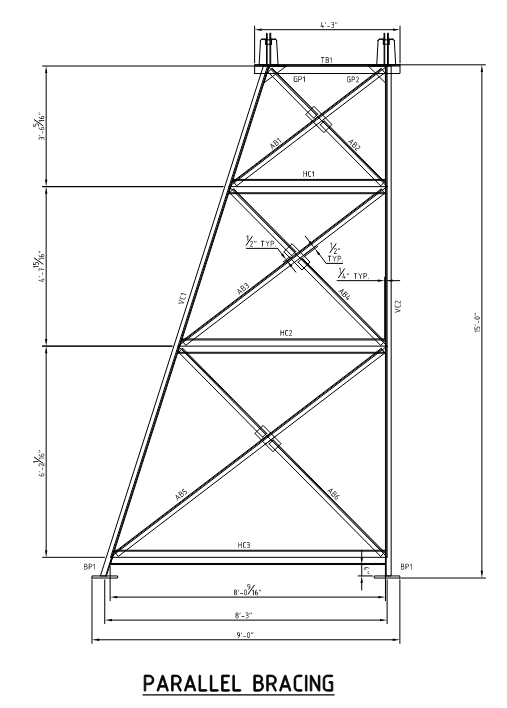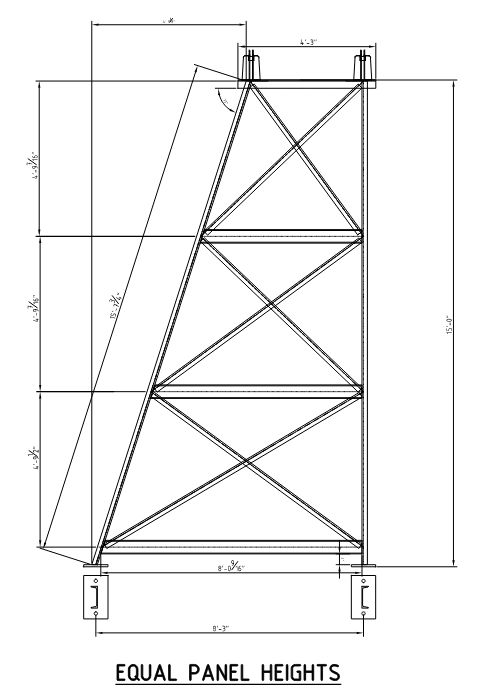Ingenuity
Structural
- May 17, 2001
- 2,374
I have a new aggregate conveyor (not yet installed) that has to be lengthened with a new vertical support frame to be added. Due to some site obstructions the new frame will be asymmetric. The exterior geometry of the frame is somewhat fixed, but I can 'play' with the internal bracing configuration.
Is there a preferred internal geometry for such frames:
OPTION 1: Parallel bracing:

OPTION 2: Equal panel height:

OPTION 3: Not parallel nor equal height.
Is there a preferred internal geometry for such frames:
OPTION 1: Parallel bracing:

OPTION 2: Equal panel height:

OPTION 3: Not parallel nor equal height.
